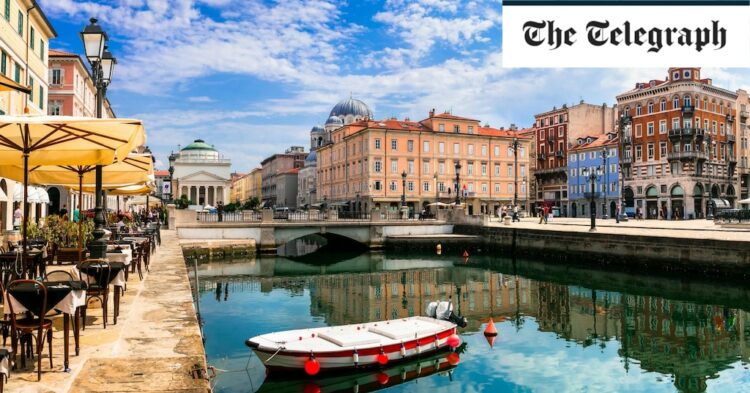Trieste has no stand-out sights, no must-see attractions. Its appeal is subtler, more discreet. The travel writer Jan Morris captured its cryptic aura in her melancholy memoir, Trieste and the Meaning of Nowhere. James Joyce, who spent a decade here, relished its understated charm.
The site that sums up Trieste’s moody ambience is Miramare, a fairy-tale castle on a rocky promontory, battered by the restless sea. It was built by Maximilian, kid brother of the Austrian Emperor, Franz Joseph, but he barely spent a year here before he was whisked away to become the Emperor of Mexico. His quixotic empire was overthrown, and the republican rebels had him shot by firing squad. Today his forsaken folly is a museum, a monument to Habsburg hubris. It’s supposed to be bad luck to spend the night here. Several subsequent inhabitants also met violent ends.
I finished up back where I’d begun, on Mount Giusto, high above the city. Most tourists make the hike to see the castle and the cathedral, but I’d come to see the mausoleum of Johann Joachim Winckelmann (1717-1768), the father of modern archaeology. Winckelmann wasn’t from Trieste – he’d merely come here to catch a boat to Rome – but while he was here, he befriended a young man called Francesco Arcangeli who murdered him (for what reason, no-one knows). Winckelmann was buried in the cathedral across the road. Arcangeli was broken on the wheel in the city square below.
This sinister story encapsulates what I love about Trieste. Everywhere you go in this elusive city, you’re stepping on layer upon layer of history – some of it recorded, much of it unknown. As I walked back to the harbour, past the Roman amphitheatre, I recalled something Jan Morris wrote in Trieste and the Meaning of Nowhere: “Here, more than anywhere, I remember lost times, lost chances, lost friends.” As the evening ferry carried me away, and Trieste shrank into the sea, her words were still ringing in my ears.
Where to stay
I was a guest of Tivoli Portopiccolo Sistiana (www.tivolihotels.com). Doubles from €300 per night, including breakfast. The room rate includes use of the chic beach club. The house style is international rather than Italian. The entire resort is car-free (there’s a large underground garage). There are several restaurants on site, in the hotel and the surrounding development. The best food I ate by far was in the beach club restaurant. It’s a good spot if you want seclusion, or if you’re travelling with children.
Source link : https://www.telegraph.co.uk/travel/destinations/europe/italy/why-visit-trieste-the-forgotten-italian-city/
Author :
Publish date : 2024-06-24 03:00:00
Copyright for syndicated content belongs to the linked Source.
